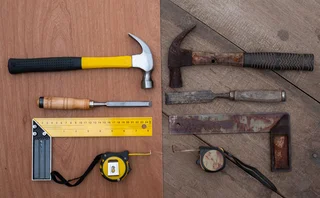October 2016: Where Do Startups Go to Die?

I remember a number of years ago speaking to a startup consultant who had successfully negotiated the birth, establishment and growth of a number of software startups operating across the capital markets. The consultant explained to me that if, as the CEO of a startup, you do not spend every hour of every day focusing on sales, you and your business will fail. Period.
Once startups have emerged from what is known in the industry as “the valley of death”—that is if they’re lucky enough to do so—they’re not out of the woods. Not by a long shot. According to an article, 10 Ways for Startups to Survive the Valley of Death by Martin Zwilling, published in Forbes, Paul Gompers and Josh Lerner, professors of business administration at Harvard Business School, estimate the failure rate among startups that aren’t able to attract investors within their first three years to be around 90 percent. In other words, as a startup, if you’re not making sales and you cannot find investors, you’re as good as dead.
The startup graveyard is chock-full of firms that had outstanding products and services, but for one reason or another didn’t make the cut. And the reason more often than not is straightforward: They couldn’t get their target market to pay for whatever it was that they were selling.
One of the first rules in startup land is that a target market liking a product doesn’t necessarily mean they will buy it, a lesson large numbers of startups have learned firsthand. And so, once they have their minimum viable product (MVP), startups absolutely have to focus all their energy on selling it. They can build, measure, and learn, and they can pivot until the cows come home, but that is no substitute for sales. Companies like Twitter and LinkedIn are the exception, not the rule: Both have yet to turn a profit and still their value remains strong due to their phenomenal potential. But they are only a handful of firms that can claim such success. It’s not rocket science; in fact it’s not science at all—it’s pure economics. If you don’t make money, you fail.
One of the key tenets of the Lean startup methodology that is often ignored is the importance of getting out of the building. And that’s the really difficult part of making a success of a startup, not in terms of developing and testing the potential of your MVP, but rather convincing your target market that you are solving a problem for them and that they should pay you accordingly.
Once startups have emerged from what is known in the industry as “the valley of death”—that is if they’re lucky enough to do so—they’re not out of the woods. Not by a long shot.
And so in response to the question posed in the headline of this column, the answer is simple: They go nowhere—they simply run out of money and die where they are.
Only users who have a paid subscription or are part of a corporate subscription are able to print or copy content.
To access these options, along with all other subscription benefits, please contact info@waterstechnology.com or view our subscription options here: http://subscriptions.waterstechnology.com/subscribe
You are currently unable to print this content. Please contact info@waterstechnology.com to find out more.
You are currently unable to copy this content. Please contact info@waterstechnology.com to find out more.
Copyright Infopro Digital Limited. All rights reserved.
You may share this content using our article tools. Printing this content is for the sole use of the Authorised User (named subscriber), as outlined in our terms and conditions - https://www.infopro-insight.com/terms-conditions/insight-subscriptions/
If you would like to purchase additional rights please email info@waterstechnology.com
Copyright Infopro Digital Limited. All rights reserved.
You may share this content using our article tools. Copying this content is for the sole use of the Authorised User (named subscriber), as outlined in our terms and conditions - https://www.infopro-insight.com/terms-conditions/insight-subscriptions/
If you would like to purchase additional rights please email info@waterstechnology.com
More on Emerging Technologies
Liquidnet sees electronic future for gray bond trading
TP Icap’s gray market bond trading unit has more than doubled transactions in the first quarter of 2024.
Verafin launches genAI copilot for fincrime investigators
Features include document summarization and improved research tools.
Waters Wrap: Open source and storm clouds on the horizon
Regulators and politicians in America and Europe are increasingly concerned about AI—and, by extension, open-source development. Anthony says there are real reasons for concern.
Waters Wavelength Podcast: Broadridge’s Joseph Lo on GPTs
Joseph Lo, head of enterprise platforms at Broadridge, joins the podcast to discuss AI tools.
Man Group CTO eyes ‘significant impact’ for genAI across the fund
Man Group’s Gary Collier discussed the potential merits of and use cases for generative AI across the business at an event in London hosted by Bloomberg.
BNY Mellon deploys Nvidia DGX SuperPOD, identifies hundreds of AI use cases
BNY Mellon says it is the first bank to deploy Nvidia’s AI datacenter infrastructure, as it joins an increasing number of Wall Street firms that are embracing AI technologies.
This Week: Linedata acquires DreamQuark, Tradeweb, Rimes, Genesis, and more
A summary of some of the latest financial technology news.
Systematic tools gain favor in fixed income
Automation is enabling systematic strategies in fixed income that were previously reserved for equities trading. The tech gap between the two may be closing, but differences remain.
Most read
- Chris Edmonds takes the reins at ICE Fixed Income and Data Services
- Deutsche Börse democratizes data with Marketplace offering
- Waters Wavelength Podcast: Broadridge’s Joseph Lo on GPTs








